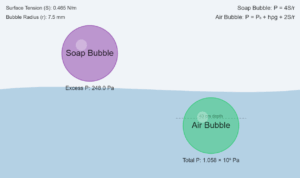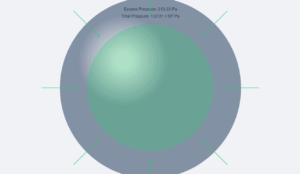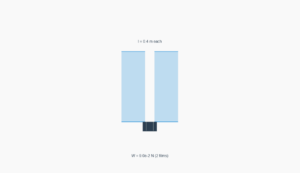Hydraulic System Simulation
Interactive demonstration of Pascal's Principle and force multiplication
Example
Question:
In a car lift compressed air exerts a force \(F_1\) on a small piston having a radius of 5.0 cm. This pressure is transmitted to a second piston of radius 15 cm. If the mass of the car to be lifted is 1350 kg, calculate \(F_1\). What is the pressure necessary to accomplish this task? (\(g = 9.8\,\mathrm{ms}^{-2}\))
Solution:
Since pressure is transmitted undiminished throughout the fluid,
\[
F_1 = \frac{A_1}{A_2} F_2 = \frac{\pi (5 \times 10^{-2}\,\mathrm{m})^2}{\pi (15 \times 10^{-2}\,\mathrm{m})^2} \cdot (1350\,\mathrm{kg} \times 9.8\,\mathrm{ms}^{-2})
\]
\[
= 1470\,\mathrm{N} \approx 1.5 \times 10^3\,\mathrm{N}
\]
The air pressure that will produce this force is
\[
P = \frac{F_1}{A_1} = \frac{1.5 \times 10^3\,\mathrm{N}}{\pi (5 \times 10^{-2})^2\,\mathrm{m}^2}
= 1.9 \times 10^5\,\mathrm{Pa}
\]
This is almost double atmospheric pressure.
Hydraulic brakes in automobiles also work on the same principle.
Real-time Calculations
Pascal's Principle
Pressure applied to a confined fluid is transmitted equally in all directions. A small force on a small piston creates the same pressure as a large force on a large piston, enabling force multiplication in hydraulic systems.



